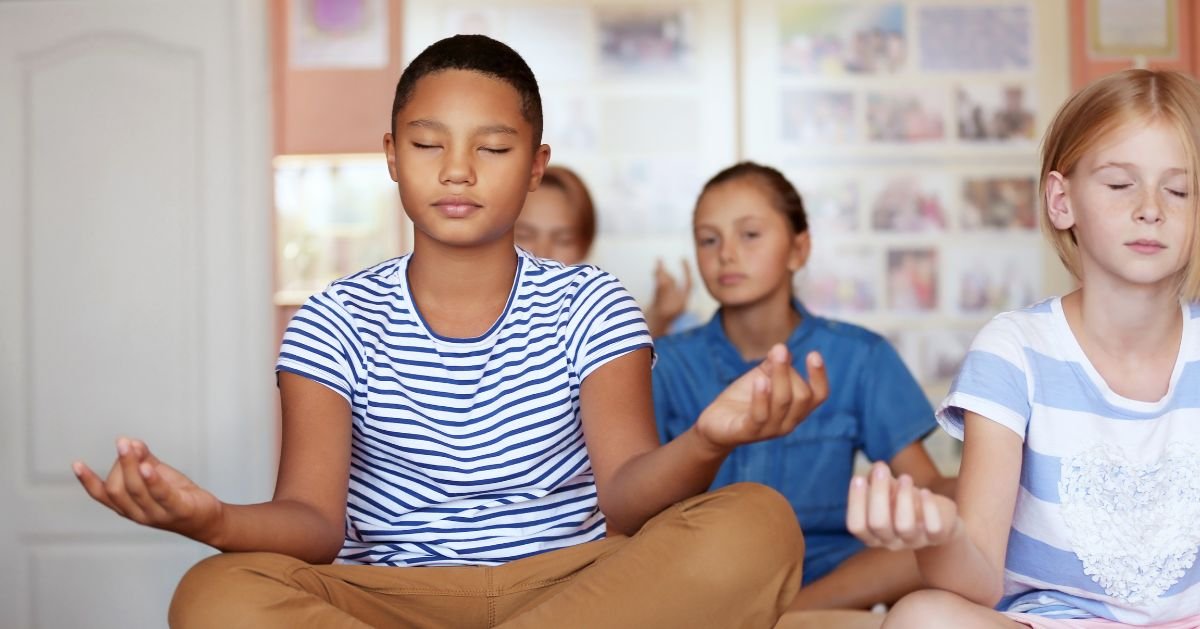Meditation has become popular lately because it helps people relax and be more mindful, leading to overall well-being. But when it comes to including meditation in schools, there are different opinions and things to consider. Some people in the education field think it’s a good idea to use meditation to improve students’ well-being and create a better learning environment. Why Should Meditation Not Be Taught in Schools?
However, there are valid reasons why teaching meditation in schools might not be a good idea. It could mix education with religion, which goes against the idea of keeping schools separate from religious beliefs. Schools should aim to give students a wide-ranging education that meets their different needs and interests. Forcing meditation on students could ignore their individuality and what they prefer. So, should we teach meditation in schools?
This article explores that question and talks about the potential problems that can come with introducing meditation in schools.

Contents
How Meditation Impact on Students?
Meditation methods are commonly imparted to students using various approaches. One prevalent method involves specialized programs or incorporation into subjects such as physical education, health, or social-emotional learning. The pupils are guided by skilled meditation teachers or instructors who provide direction and foster a friendly environment.
Commencing the meditation sessions, a concise introduction is provided to elucidate the purpose and significance of meditation. Subsequently, the students are given the chance to personally engage in meditation and explore it firsthand. This enables them to experience the practice and attempt it themselves.
You can also read more blogs here.
Creating a Mindful Environment
Schools that introduce meditation often aim to create a calm and peaceful environment that helps students learn and grow. They achieve this by creating spaces that encourage relaxation and tranquility. Cozy furnishings, muted lighting, and natural elements like plants may be present in these spaces. Some schools even set up special rooms where students can go for quiet reflection and to recharge their energy.
Breathing Techniques and Mindfulness
One fundamental aspect that often arises is the emphasis on breath awareness and mindfulness. Students are instructed to concentrate on their breathing and become conscious of the rhythm and flow of it. This practice helps them anchor their focus on the present moment and foster a sense of inner tranquility. However, proponents against teaching meditation in schools argue that these practices may not be suitable or effective for all students, as they may not resonate with everyone or address individual needs.
Body Scan and Progressive Relaxation
Another common meditation practice taught in schools is the body scan. Students are urged to conduct a thorough body scan, focusing on each body area and noting any sensations or tensions that may be present. This method encourages body awareness and aids learners in forging a stronger bond between their bodies and minds. Additionally, progressive relaxation exercises, where students tense and release different muscle groups, aid in physical and mental relaxation.
Guided Visualizations and Imagery
Guided visualizations and imagery exercises are frequently incorporated into meditation programs in schools. Students are guided via imaginative visual experiences that promote optimistic thinking. These visualizations may include scenes from nature, peaceful settings, or affirming imagery that promotes self-confidence and inner strength. Such exercises nurture creativity and allow students to tap into their inner resources.
Mindful Movement and Yoga
To further enhance the mind-body connection, schools often integrate mindful movement practices, including yoga, into their meditation programs. These activities combine gentle stretches, postures, and breathing techniques to promote physical health and well-being. Yoga also fosters balance, flexibility, coordination, mindfulness, and self-awareness.
Integrating Meditation into the Curriculum
Many schools recognize the value of integrating meditation practices into various subjects beyond dedicated meditation sessions.
For example, teachers may incorporate short mindfulness breaks during classroom transitions or before exams to help students relax and refocus their attention. This integration allows students to apply meditation techniques in real-life situations, enhancing their overall learning experience.

The Controversy Surrounding Meditation in Schools
While proponents argue that meditation offers numerous benefits to students, there is a growing controversy surrounding its implementation in schools.
Lack of Scientific Consensus
One of the primary arguments against introducing meditation in schools is the lack of scientific consensus regarding its effectiveness. Despite the fact that some research generated excellent results, others produced mixed findings or identified potential hazards. Critics argue that without a solid scientific foundation, it is premature to incorporate meditation into the curriculum. They emphasize the importance of evidence-based practices in education and caution against adopting unproven techniques that may not yield the desired results.
Secularism and Religious Neutrality
Another point of contention surrounding meditation in schools is the issue of secularism and religious neutrality. Buddhism and Hinduism, among other spiritual and theological traditions, are the origins of meditation. Critics argue that introducing meditation practices may blur the line between religion and education, infringing upon the principle of separation of church and state. They express concerns that teaching meditation in schools could inadvertently promote a particular religious or spiritual worldview, which may not align with the diverse beliefs of students and their families.
Potential Ethical and Legal Concerns
Critics of meditation in schools raise ethical and legal concerns regarding consent and potential harm. Some argue that practicing meditation requires informed consent from students and their parents, as it involves altering their mental state and introducing potentially powerful experiences. Without proper understanding and consent, students may feel uncomfortable or experience adverse effects. Moreover, there are concerns about the qualifications and training of instructors who lead meditation sessions, ensuring they have the necessary expertise to address any psychological or emotional challenges that may arise.
Alternative Approaches to Promote Well-being in Schools
While meditation may not be the ideal approach for promoting well-being in schools, several alternative methods can be integrated into educational systems. These approaches take into account the specific needs of students and offer practical tools for enhancing their overall well-being.
Mindfulness-Based Programs
Mindfulness-based programs have gained recognition for their positive impact on well-being. These programs teach students to cultivate present-moment awareness and non-judgmental acceptance. Unlike meditation, mindfulness practices can be integrated seamlessly into existing subjects or activities, making them more accessible and practical for schools.
Physical Activity and Sports
Regular physical activity and sports have been proven to enhance both physical and mental well-being. Schools can prioritize physical education classes and encourage extracurricular sports activities. Engaging in physical exercise releases endorphins reduces stress, and improves overall mood and focus.
Emotional Intelligence Development
Emotional intelligence is a crucial aspect of well-being. Schools can implement programs that focus on developing emotional intelligence skills such as self-awareness, self-regulation, empathy, and effective communication. By equipping students with these skills, they can better navigate relationships, manage conflicts, and enhance their overall well-being.
Creative Expression and Arts
Artistic expression has a profound impact on well-being. Schools can incorporate art, music, and drama programs that provide students with a means of creative expression. Engaging in artistic activities fosters self-discovery, boosts self-esteem, and allows students to explore their emotions and thoughts in a supportive environment.
Conclusion
The debate surrounding the inclusion of meditation in schools raises valid concerns and considerations. While meditation has gained popularity for its potential benefits, such as relaxation and mindfulness, there are several reasons why teaching meditation in schools may not be the most suitable approach.
One of the primary concerns is the potential mixing of education with religion.
Schools are generally expected to maintain a secular and neutral environment, separate from religious beliefs. Introducing meditation practices, which have origins in spiritual and theological traditions, may inadvertently promote a particular religious or spiritual worldview, thus disregarding the diverse beliefs of students and their families.
Additionally, forcing meditation on students may ignore their individuality and personal preferences. Not all students may resonate with or find meditation beneficial for their specific circumstances. It is essential for schools to provide a wide-ranging education that meets the diverse needs and interests of students, allowing them to explore various avenues of well-being.







